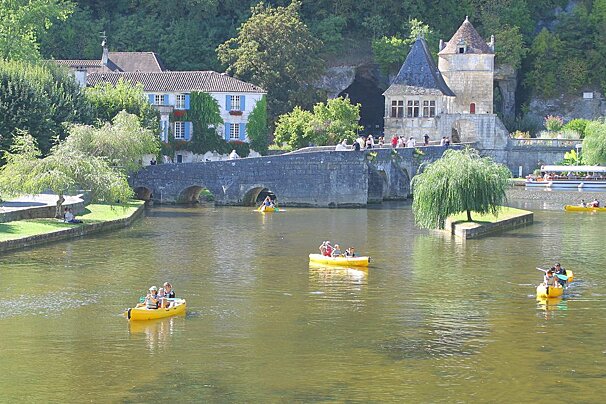
Brantome Canoe, Brantome
Not only can you take a relaxing journey down the Dronne river in a canoe but you can try your hand at stand up paddle boarding or take to the cliffs and trees for some adventure above ground.

© Le Moulin de Vigonac Hotel, Brantome
Contemporary rooms situated in the out houses of a 16th Century Water Mill
The Mill was originally built in the 16th Century on the Dronne River to produce walnut oil and flour. At the turn of the 19th Century, out buildings were built to house the Master's family and working stables. With a fascinating history up until the present, the buildings have been lovingly renovated into spacious, modern and classy bedrooms alongside a modern French restaurant, which still shows off the original structures brick work.
10 bedrooms adorn the property, each with it own unique comforting style. Flat screen TVs, mini-bars and free Wifi access is also available. Bath robes are included and can be used while relaxing next to the large outdoor pool and listening to the sound of the passing river.
Business meetings and seminars are viable and the team will be at your disposal to help with lunches, group catering or any local activities.
For a fee, a continental breakfast is available in the restaurant or can be brought to your room.
Often described as 'The Venice of Perigord', the hotel is situated on an island alongside a natural park. It is a quaint, romantic town steeped in history, where leisurely walks through the narrow streets or mornings at the local market can be relished.
Classical French dinning can be experienced inside or out on the garden terrace. Set menus or à la carte is available and is open every evening except Thursday. A reservation is required.

Not only can you take a relaxing journey down the Dronne river in a canoe but you can try your hand at stand up paddle boarding or take to the cliffs and trees for some adventure above ground.

Within the hotel grounds of the picture perfect Moulin de l'Abbaye hotel, set alongside the River Dronne and with a dining room oozing class and a waterside terrace with shaded trees, it would be difficult to find a spot in the world more idyllic than this!

Set in an inviting tranquil hotel just a short distance from the centre of medieval Brantome. A meal typical of the region including duck, foie gras and of course truffles can be enjoyed in the spacious restaurant or under the mulberry trees on the terrace in the summer.
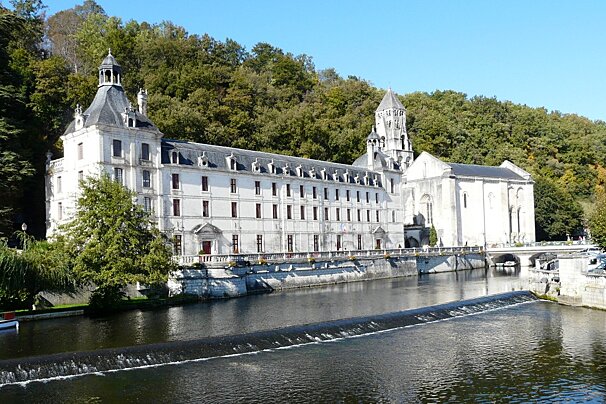
With one of the oldest bell towers in France this abbey is set into the cliff face and overlooks the Dronne river, a beautiful centre piece to this delightful town.
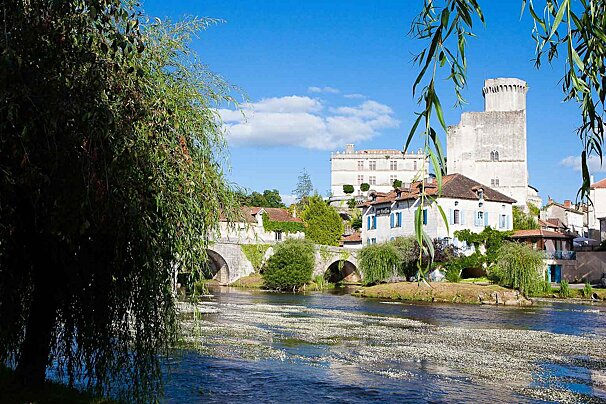
This château is the combination of two castles, a medieval one dating to the 13th century and a Renaissance palace dating to the 16th century.
Learn about the famous "Truffles of Périgord" at this living museum which describes the process of truffle cultivation in an old farmhouse in the truffle-growing village of Sorges. As well as the museum, there is a tour taking you along a three kilometre trail, over the limestone plateaux which is responsible for the excellent truffles of the region.

The museum of art and archaeology houses an excellent prehistoric selection of findings and skeletons from the region.

Today there are only a few remaining elements of the old Roman town which was located at Périgueux.
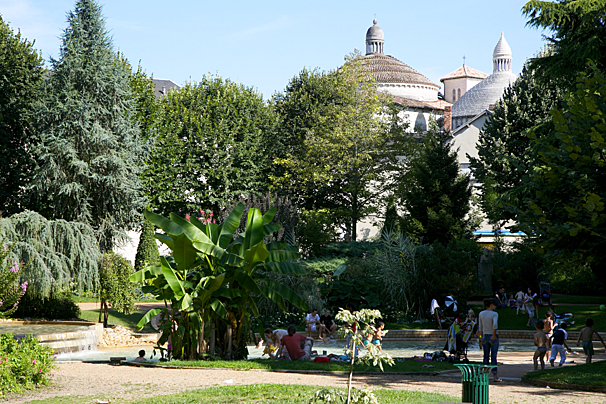
These gardens are home to the remaining elements of the vast Roman amphitheatre which housed over 20,000 people in the 1st and 2nd centuries.

Located on an ancient Roman road, the town of Brantôme on the Dronne river is centred around its 8th century Benedictine abbey.

The pretty old town of Montignac serves as a good base for visiting the nearby prehistoric caves.

The relaxed town of Le Bugue sits on the river Vézère where it's joined by the Doux. A more tranquil base for exploring the region, it has some pretty, narrow streets and a bustling market twice a week.
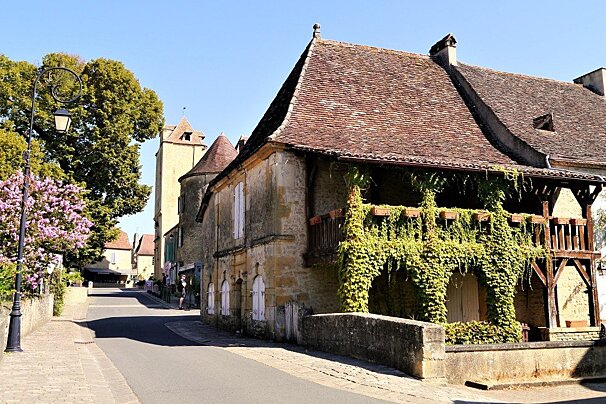
Trémolat was originally home to a 6th century hermit, Saint-Cybard, before monks built their monastery here in the 9th century.

Limeuil is a picturesque old village which features on the list of 'Les Plus Beaux Villages de France'. It has a pretty park on the top of the hill and some ruins from its medieval past.

The town and the surrounding prehistoric sites have been designated a UNESCO World Heritage site. Nearly 150 sites have already been discovered and contain significant finds dating back as far as the Middle Stone Age - about 300,000 to 40,000 years ago.